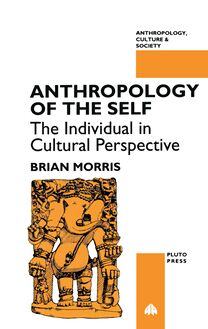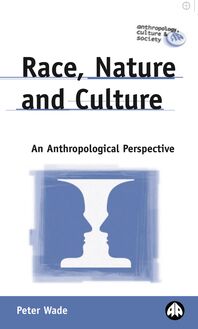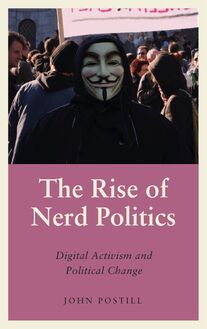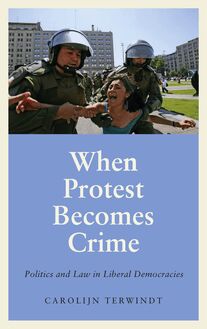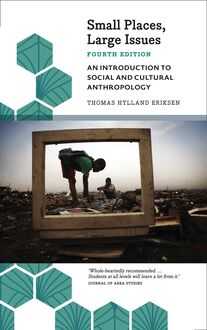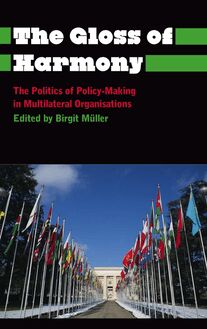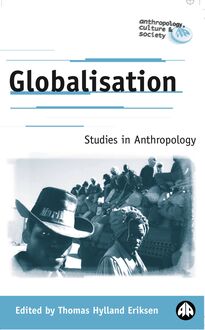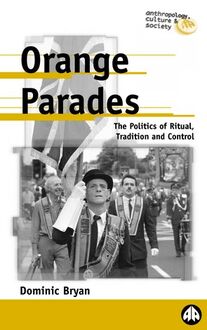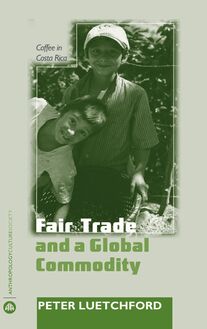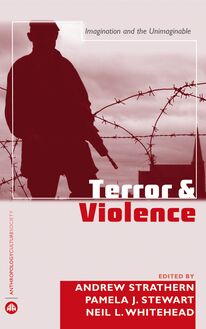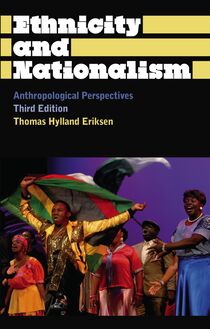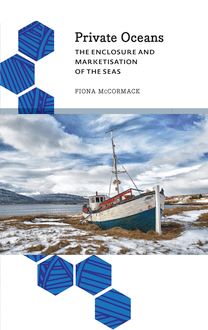-
 Univers
Univers
-
 Ebooks
Ebooks
-
 Livres audio
Livres audio
-
 Presse
Presse
-
 Podcasts
Podcasts
-
 BD
BD
-
 Documents
Documents
-
- Cours
- Révisions
- Ressources pédagogiques
- Sciences de l’éducation
- Manuels scolaires
- Langues
- Travaux de classe
- Annales de BEP
- Etudes supérieures
- Maternelle et primaire
- Fiches de lecture
- Orientation scolaire
- Méthodologie
- Corrigés de devoir
- Annales d’examens et concours
- Annales du bac
- Annales du brevet
- Rapports de stage
La lecture à portée de main
206 pages
English
Découvre YouScribe en t'inscrivant gratuitement
Je m'inscrisDécouvre YouScribe en t'inscrivant gratuitement
Je m'inscris
Obtenez un accès à la bibliothèque pour le consulter en ligne
En savoir plus
En savoir plus
206 pages
English
Obtenez un accès à la bibliothèque pour le consulter en ligne
En savoir plus
En savoir plus

Description
This study of the Tamil diaspora is one of the first full ethnographic studies of a postcolonial migrant community, and a major contribution to the study of migration, globalisation, identity politics and ‘long distance’ nationalism from an anthropological perspective.
Fuglerud’s study traces the history of Tamil migration, from the arrival of the economic migrants of the 1960s to the ‘asylum seekers’ of the mid 1980s onwards. He draws unnerving parallels between the status of the Tamil community in Sri Lanka, as a beleaguered and persecuted minority waging a war of liberation, and as a displaced, marginalised and excluded refugee community.
Fuglerud argues that, in the process of displacement, particular aspects of Tamil culture – marriage, dowry, chastity and ritual – acquire a heightened significance. He examines the contradictions and inconsistencies which characterise the Tamil refugee communities, and the success of revolutionary Tamil nationalism in exile, highlighting the transnational nature of identity politics.
1. Introduction
2. History and Nationalism
3. Semantics of Terror
4. Migration to Norway
5. Fields and Boundaries
6. Money, Marriage and Meaning
7. The Ethnic Interface
8. The Nature of Tradition
9. From the Traditional to the Revolutionary
10. Between Nation and State
Bibliography
Index
Fuglerud’s study traces the history of Tamil migration, from the arrival of the economic migrants of the 1960s to the ‘asylum seekers’ of the mid 1980s onwards. He draws unnerving parallels between the status of the Tamil community in Sri Lanka, as a beleaguered and persecuted minority waging a war of liberation, and as a displaced, marginalised and excluded refugee community.
Fuglerud argues that, in the process of displacement, particular aspects of Tamil culture – marriage, dowry, chastity and ritual – acquire a heightened significance. He examines the contradictions and inconsistencies which characterise the Tamil refugee communities, and the success of revolutionary Tamil nationalism in exile, highlighting the transnational nature of identity politics.
1. Introduction
2. History and Nationalism
3. Semantics of Terror
4. Migration to Norway
5. Fields and Boundaries
6. Money, Marriage and Meaning
7. The Ethnic Interface
8. The Nature of Tradition
9. From the Traditional to the Revolutionary
10. Between Nation and State
Bibliography
Index
Sujets
Informations
| Publié par | Pluto Press |
| Date de parution | 20 février 1999 |
| Nombre de lectures | 0 |
| EAN13 | 9781849640497 |
| Langue | English |
| Poids de l'ouvrage | 1 Mo |
Informations légales : prix de location à la page 0,6250€. Cette information est donnée uniquement à titre indicatif conformément à la législation en vigueur.
Extrait
LIFE ON THE OUTSIDE
The Tamil Diaspora and Long-Distance Nationalism
Øivind Fuglerud
P Pluto Press LONDON • STERLING, VIRGINIA
First published 1999 by Pluto Press 345 Archway Road, London N6 5AA and 22883 Quicksilver Drive, Sterling, VA20166–2012, USA
Copyright © Øivind Fuglerud
The right of Øivind Fuglerud to be identified as the author of this work has been asserted by him in accordance with the Copyright, Designs and Patents Act 1988.
British Library Cataloguing in Publication Data A catalogue record for this book is available from the British Library
ISBN 0 7453 1438 4 hbk
Library of Congress Cataloging in Publication Data Fuglerud, Øivind Life on the outside: the Tamil diaspora and long distance nationalism/Øivind Fuglerud. p. cm. —(Anthropology, culture and society) ISBN 0–7453–1438–4 (hbk) 1. Tamil (Indic people)—Relocation. 2. Tamil (Indic people) —Migrations. 3. Tamil (Indic people)—Government policy—Sri Lanka. 4. Forced migration—Sri Lanka. 5. Sri Lanka—Race Relations. 6. Sri Lanka—Politics and government. I. Title. II. Series. DS489.25.T3F84 1999 305.89'4811—dc21 98–42632 CIP
Designed and produced for Pluto Press by Chase Production Services, Chadlington, OX7 3LN Typeset from disk by Stanford DTP Services, Northampton Printed in the EC by Athenaeum Press, Gateshead
CONTENTS
1 Introduction 2 History and Nationalism 3 Semantics of Terror 4 Migration to Norway55 5 Fields and Boundaries 6 Money, Marriage and Meaning 7 The Ethnic Interface 8 The Nature of Tradition 9 From the Traditional to the Revolutionary154 10 Between Nation and State Notes Bibliography Index
1 20 38
72 95 117 138
172 185 189 199
1
INTRODUCTION
What does it mean, at the end of the twentieth century, to speak like Aimé Césaire of a ‘native land’? What processes rather than essences are involved in present experiences of cultural identity? J. Clifford,The Predicament of Culture: 275
At a press conference in Colombo in December 1995, the Sri Lankan president, Chandrika Kumaratunga, declared that out of a pre-war population of 950,000 in the Northern Province of Sri Lanka 400,000 people had now settled outside the country. In order to understand the implications of this statement, one needs to know at least two things. The first one is that since the late 1970s Sri Lanka has been involved in a civil war. The island’s main categories of people are the Sinhalese, who make up 74 per cent of the population, and several Tamil-speaking groups, and the war is being played out between representatives of these communities. The second one is that, while members of the Tamil minority are also settled elsewhere in Sri Lanka, the Northern Province referred to by the president is in facttheTamil-dominated province of the island. The statement, therefore, indicates the degree to which this particular minority has been subjected to displacement from its home areas. Unfortunately, the main advantage of the president’s estimate is that it is official. Like most figures on refugees provided by governments, this is too low. Not only do more realistic calculations suggest a total 1 closer to 700,000 Tamil refugees, that is one-third of Sri Lanka’s entire pre-war Tamil population, but with respect to the effects of the war one must take into account that another third of the members of the same minority have been internally displaced since the war started. These are the disturbing facts. Nowadays, when concepts like ‘diaspora’ and ‘transnationality’ are finally attracting interest in departments of anthropology, the Tamils 1
2Life on the Outside from Sri Lanka are certainly a case to consider. The people displaced, mainly from the Northern Province, can now be found on every continent. While the largest settlements are located in Canada, England, Germany and Switzerland, there are Tamil communities in most countries of the world from Japan, Botswana and Lithuania to Malaysia, Panama and Finland. The choice of the main field site in this study, the Scandinavian country of Norway, where about 7000 people of Tamil origin live, may therefore be less idiosyncratic than might appear at first sight. My argument is that among the first generation of Tamils from Sri Lanka, wherever they live, one may expect to find some of the same processes at work. Norway is as good a place as any to look for them. In fact, in some respects, a country like Norway may be better than many for such a study as it is a relatively new member in the league of refugee-receiving countries and it is still struggling to develop a public perspective in which facts and events may be arranged in a meaningful order. The reason is that what it means to be an immigrant in a Western country might be perceived more clearly in the case of Norway than it would be in the case of Canada or England. Norway is still a country where most people can remember when and under what circumstances they first met a person who was not born here – especially one of different creed or colour. While there have been small groups of migrant workers living in Norway since the late 1960s, the dilemma brought about by international migration has only been faced by the population at large through the presence of asylum seekers since the mid-1980s. This book is an attempt to place the interaction between Tamil refugees and Norway within a wider setting of social processes. In my opinion this kind of academic exercise has been neglected for too long by anthropologists. I can only agree with Turner (1994) when he says that, with respect to the field of multiculturalism, ‘most of us have been sitting around like so many disconsolate intellectual wallflowers waiting to be asked to impart our higher wisdom and more than a little resentful that the invitations never come’ (p. 406). While international refugee research is dominated by law, migration research has tended in general to be very specialised and ‘applied’, mainly in the sense of being adapted to the needs of national governments. In Norway one can find numerous studies on ‘this group in the labour market’ or ‘that group and the welfare system’ – mostly undertaken
Introduction3 by sociologists with their questionnaires in good order. Efforts to achieve a ‘thick description’, however, are few and far between. The prevalent view among anthropologists has, in Rosaldo’s apt words, been that ‘if it’s moving it isn’t cultural’ (1989: 209). For someone who believes that anthropology may still yield some insights, this situation is unsatisfactory. I should make it clear, however, that my goal here is not to promote studies of ethnic ‘boundary maintenance’. On the contrary, I find this analytical perspective, in spite of its Norwegian tradition (Barth 1969), not entirely suitable for my purpose. Through my involvement with the refugees in question I have become convinced that if we focused solely on inter-ethnic patterns of interaction we would find that the motives and intentionality, and therefore also the rationality, of neither parties can be understood within a local setting. At least two questions would need to be discussed if we chose to adopt such a perspective: the first one concerns the importance to the interaction of images of the other derived from outside the interactive field itself. If it were possible, one cannot in our society presume an interactive basis in individual autonomy and empathic understanding alone. The origin of such images, the structuring and distribution of information, would need to be included in the analysis. The second question concerns the extent to which such a focus would capture what is most significant to the parties in their day-to-day lives. As an opening statement I will offer the opinion that for most Tamils in Norway it would not. Harsh as it may sound I venture the claim that maintaining relationships to Norwegian people is not a major concern. There is no doubt in my mind that the situation inside 2 Eelam, and people’s connections to their fellow countrymen around the globe, are of far greater importance in their exiled existence. For this reason I am also hesitant to emphasise too strongly the refugee aspect in the present work. We have recently seen a tendency among researchers to treat ‘refugees’ as aculturalcategory, maintaining the explicit or implicit understanding that one can deal with people in their capacity as refugees without taking into account their cultural background and the political circumstances of their flight. This seems a misguided approach to me. As feminist anthropologists have argued with respect to women (Moore 1994: 17), refugees are ‘universal in their particularity’, and we must take note of both the universal and the particular in our studies.
4Life on the Outside I should also make it clear that the present work is not, or at least not primarily, a study of ‘integration’ or of ‘ethnic discrimination’. I am more interested in what goes on behind, or inside, the ethnic boundaries; that is, the way in which a society transforms itself when such a large section of it is thrown into exile. With regard to South Asians in general, and Asian Indians in particular, much valuable work has been done on this question already (e.g. Clarke, Peach and Vertovec 1990, van der Veer 1995). While recognising the importance of these contributions, the focus in this book is slightly different, partly because these works seem to place more emphasis on the local adjustment of migrants than is warranted in the present case. This, no doubt, is due to the fact that a major theme in the research on Indians outside India has been the situation of the indentured workers and their descendants, that is, the consequences of migratory movements which took place around the turn of the century when the means of communication and the possibilities of onward migration were radically different from those of today. Compared to present-day Sri Lankan Tamils the situation of the Indian migrant workers was characterised more by geographical displacement than by diasporic processes in the strict sense, that is, the maintenance of group consciousness defined by a continued relationship with an original homeland within a population dispersed between several different locations (Safran 1991). Moreover, the migration from other countries of South Asia affected the societies from which migrants moved only to a limited extent. The migration of Tamils, on the other hand, is intrinsically linked to a radical transformation of Tamil society as such. The future of Eelam depends on the Tamil diaspora as much as the future of the diaspora, in a certain sense, depends on the fate of Eelam. With respect to the individual migrants and refugees I do not mean by this remark simply that their relationship to home is one of heimatweh, of ‘let peace come and I will go’, and that this is a deciding factor in their lives, but rather that it is the troubled relationship between here and there which needs to be focused on. One may, perhaps, argue that the relationship between a migrant population and their society of origin can, basically, only be described in one of two ways. One possibility is that individuals remain part of social relationships at home: the slots they used to fill are, so to speak, left open; they are informed of everyday events, consulted in matters of importance, and the exile situation remains an extension of the primary social field until,
Introduction5 one day, they are able to go back. Excellent studies have been made of such migratory patterns. The other possibility is that migrants leave in a more fundamental sense; that, while cherishing their memories and struggling to cultivate their ties, the door nevertheless slowly closes until, finally, there is no way back.Ifthese are the options, this work, the way I see it, is about a group of people in the latter situation. It is not the case that they don’t take an interest – most Tamils are literally consumed by events at home – but there are factors which make active participation difficult. Most Tamils living in Norway would, however, not agree to such a view. To most of them the experience of exile is too new, their feelings towards events in Sri Lanka too mixed and their hopes of going home with dignity too pressing to formulate the worries of tomorrow in such words. This study, it should be observed, is about a process which is still going on – one could even say that it has only just begun. Present Tamil migration from Sri Lanka only reached sizeable proportions after the so-called ‘Colombo riots’ in 1983 where, in the space of a few days, probably more than 2000 Tamils where killed by the Sinhalese mob. In the following years the Sri Lankan situation developed into a very complex civil war with shifting alliances, but where the Sinhalese army fighting for a unitary state and Tamil guerrillas fighting for a separate Tamil homeland have been one set of ingredients. In order to avoid any misunderstanding, however, I must emphasise that little will be said here about the inter-ethnic conflict in Sri Lanka as such. In the last ten to fifteen years a number of studies dealing with this issue have been published and I refer interested readers to these (e.g. Tambiah 1986, Wilson 1988, Kapferer 1988, Manogaran and Pfaffenberger 1994). Leaving the tragic development of Sinhala state chauvinism as playing only a minor part in this particular story, in dealing with Sri Lanka my focus will be on Tamil nationalism and Tamil intra-ethnic disputes. This is not because these are more important in understanding the Sri Lankan situation in general but because, in my opinion, they are more important in understanding the particular situation of the Tamil refugees. During the last hundred years or so Sri Lanka (Ceylon) has been transformed from a society where caste was the overriding principle of differentiation into one where ethnic nationalism, that is, the claim for territory by groups who define themselves in ethnic terms, has replaced it. On the Tamil side the breakdown of caste society has entailed not only a closure towards what
6Life on the Outside is outside and different but also the unleashing of internal conflicts in order to achieve this closure. Within the larger fluctuations of power, opposing groups of Tamil militants have taken turns to hunt each other down. At every turn one recurrent consequence has been civilians and deserted guerrilla soldiers fleeing the war-torn areas of the north and east; to Colombo, to India, to the West – and to Norway. This process of flight and its vicissitudes is one of the subjects of this work. The migration of Tamil refugees to Europe is, however, part of a much larger picture. As an object of study, refugees may best be pictured as located in the midst of three concentric circles. When we enter the innermost area of their life-worlds we discover that we are already standing within the wider circumference of the second and third; to be at the centre of any of them is to be at the centre of all three. The second circle, so to speak, is the nature of migration as such and the challenges that go with it. Migration not only concerns the movement of individuals through space but, as defined through legal and other means of control, is also a mediating concept in the relationship between ‘the West and the Rest’. During the last ten to fifteen years questions related to migrants of different categories have become, without exaggeration, among the most difficult and most debated political issues in Europe. During this time laws have been made, constitutions have been changed and ministers have had to go because of questions concerning who shall and who shall not be able to enter and remain within their borders. While in the 1960s and early 1970s migrant workers were, if not welcomed, at least accepted because of a general need for labour, the 1980s and 1990s has been a period when population movements have forced Europe’s old skeletons – nationalism, racism and ethnic violence – out of the closets. As a general trend one may observe that restrictions on entry have become tighter and right-wing anti-migrant political forces have become stronger. Economic migration to Europe is, generally speaking, no longer legally possible and the focus of public attention has turned to the ‘asylum seekers’, people arriving at national borders claiming refugee status and asking for protection. No doubt, the troubling effect of migration on Europe partly has to do with numbers. The practical problems related to an increase in the number of asylum seekers in Western Europe from 67,400 in 1983 to more than ten times that number in 1992 should not be overlooked and the monetary cost of handling and settling the 2.9 million asylum
Introduction7 applications which were registered in the same period has been 3 enormous. However, the fact that most of the so-called ‘new refugees’ (Martin 1988) during this period have come from non-Western countries has undoubtedly contributed to the heat of the question. The rising number of asylum seekers has been perceived by many as an ‘implosion’ of the Third World into the First and horror scenarios of European cultures being swamped by dark-skinned foreigners seeking material wealth have been exploited by news agencies and clever politicians. The Tamil refugee has been a central figure in this discourse. It may just be that the actual crafting of legal and administrative procedures related to refugees and displaced people must be left to diplomats and to our legal colleagues. This, however, does not mean that anthropologists should not enter the debate. The process of what is now called ‘globalisation’, in which refugee migration is one central element, has both moral and conceptual implications for our discipline. This work is grounded in a belief that the anthropologist is needed not only as an observer but also as a participant and a provider of perspectives in dealing with one of today’s most burning issues – the reshuffling of people. ‘Refugee’, in Roger Zetter’s words, is ‘one of the most powerful labels currently in the repertoire of humanitarian concern, national and international public policy and social differen-tiation’ (1988). It is a fact that many refugees have their origin in areas where anthropologists conduct their studies. If it is the case that the world, as they say, is becoming smaller, that countries where anthro-pologists live and work must find ways of dealing with complex processes encompassing both our field areas and our own societies, we should have something to say about these matters. In fact, it has been argued (Steen 1993) that refugees are a condensed expression of the present world condition, its ‘symptom’, and reflect the fundamental flux, fluidity, partiality and fragmentation of our time. If this is true it may just be that the more general questions contained in the study of refugees and displacement is what future anthropology is going to be about. At present, however, I think that to many anthropologists a focus on refugees still brings a feeling of uneasiness. As so often pointed out in recent years’ discussions, the anthropologist’s authority used to lie in the fact that he or she was the one who hadbeen there.His or her traditional role, as scientist and cultural critic, rested upon a monopoly of transcultural understanding which is now broken. The latter half
-
 Univers
Univers
-
 Ebooks
Ebooks
-
 Livres audio
Livres audio
-
 Presse
Presse
-
 Podcasts
Podcasts
-
 BD
BD
-
 Documents
Documents
-
Jeunesse
-
Littérature
-
Ressources professionnelles
-
Santé et bien-être
-
Savoirs
-
Education
-
Loisirs et hobbies
-
Art, musique et cinéma
-
Actualité et débat de société
-
Jeunesse
-
Littérature
-
Ressources professionnelles
-
Santé et bien-être
-
Savoirs
-
Education
-
Loisirs et hobbies
-
Art, musique et cinéma
-
Actualité et débat de société
-
Actualités
-
Lifestyle
-
Presse jeunesse
-
Presse professionnelle
-
Pratique
-
Presse sportive
-
Presse internationale
-
Culture & Médias
-
Action et Aventures
-
Science-fiction et Fantasy
-
Société
-
Jeunesse
-
Littérature
-
Ressources professionnelles
-
Santé et bien-être
-
Savoirs
-
Education
-
Loisirs et hobbies
-
Art, musique et cinéma
-
Actualité et débat de société
- Cours
- Révisions
- Ressources pédagogiques
- Sciences de l’éducation
- Manuels scolaires
- Langues
- Travaux de classe
- Annales de BEP
- Etudes supérieures
- Maternelle et primaire
- Fiches de lecture
- Orientation scolaire
- Méthodologie
- Corrigés de devoir
- Annales d’examens et concours
- Annales du bac
- Annales du brevet
- Rapports de stage
Signaler un problème
YouScribe
Le catalogue
Le service
© 2010-2024 YouScribe
